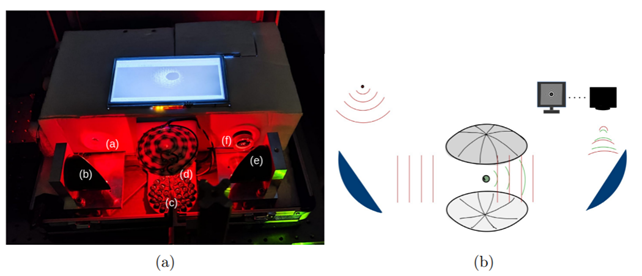Optics and Microphysics of individual atmospheric Ice Crystals at Concordia Station
The characterisation of the optical properties of ice crystals in the atmosphere is of particular importance on the Antarctic plateau. At lower latitudes, modulation of terrestrial albedo occurs through the presence of thick clouds and aerosols. In the absence of significant atmospheric aerosols and thick clouds at high altitudes, ice crystals become the predominant factor in determining radiative transfer within the visible spectrum within the atmosphere. Radiative transfer models require realistic characterisation of the optical properties of Antarctic ice crystals, which can only be obtained on a sound statistical basis by measurements from automated instrumentation. The climatic conditions at Concordia are analogous to those observed in cirriform clouds at elevated altitudes. Optical measurements made at Concordia on crystals in the atmosphere are thus comparable to measurements made in cirrus clouds, and consequently can also be used in modelling the radiative characteristics of cirrus clouds for lower latitudes and higher altitudes. The proposal entails the installation of an automated instrument set for measuring the optical and microphysical characteristics of ice crystals in the atmosphere. The set consists essentially of a polar nephelometer (PHIPS-HALO), which is capable of measuring the angular distribution of light scattered by the individual crystal (and performing photogrammetry), and a holographic device (HOLO-ICE), which is used for characterising the internal morphology of individual crystals.
The instrument HOLO-ICE has been carefully tested in laboratory and under extreme conditions on the Alps and in cold room, at the Eurocold facility of Milano Bicocca. The experimental setup is shown in Figure 3.2 and schematized in Figure 3.1b. It is composed of a fiber diode laser source (λ = 633 nm) (a) and two off-axis parabolic mirrors (90°, f =76.2 mm) (b-e), which we will refer to in the following as S1 and S2, respectively. Halfway between the two mirrors is positioned an acoustic levitator consisting of 72 ultrasonic transducers arranged on two caps (c-d) of the same sphere of diameter 2R = 13.17 cm in which to suspend solid or liquid samples (d) and a CMOS sensor (f). The system is controlled via Raspberry Pi3.

The Raspberry Pi3 is connected to an LCD touch screen, installed on the top of the instrument, as shown in the photo in Figure 3.1a, which allows complete management of the initialization processes, hologram registration and monitoring of the system throughout the duration of the measurement. This makes the instrument fully integrated, easily transportable and controllable so that it can also be used for activities in an outdoor environment. The diode laser, positioned at a focal distance f = 76.2 mm from the first parabolic mirror, emits a spherical wave that is collimated by S1 and illuminates the object ment held in suspension in the air. The light scattered by it and the more intense field transmitted are interfered with each other, resulting in an interference figure better known as a hologram, and are focused by S2 on the camera sensor. To simulate the far-field (far-field) behavior, the camera is fixed close to the focus of S2 in the intrafocal position; the distance slightly less than f ensures that the pixels cannot be illuminated with such intensity that they can be damaged.
HOLCAMERA operating outdoor (left) and indoor (right), the latter with the crystal suspended by the ultrasonic levitation system
Referents:
Marco A. C. Potenza, marco.potenza@unimi.it
Luca Teruzzi, luca.teruzzi@unimi.it

